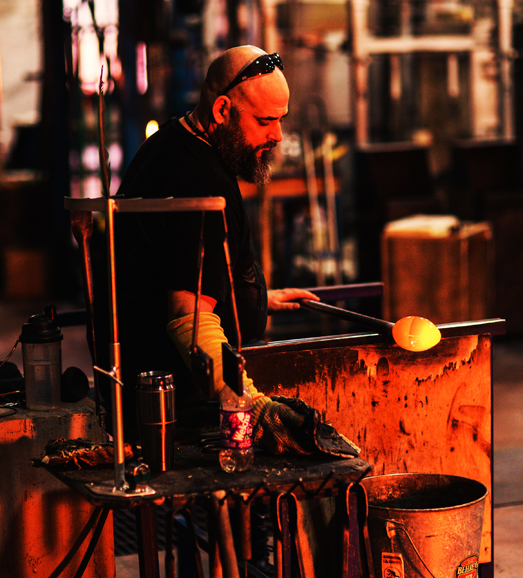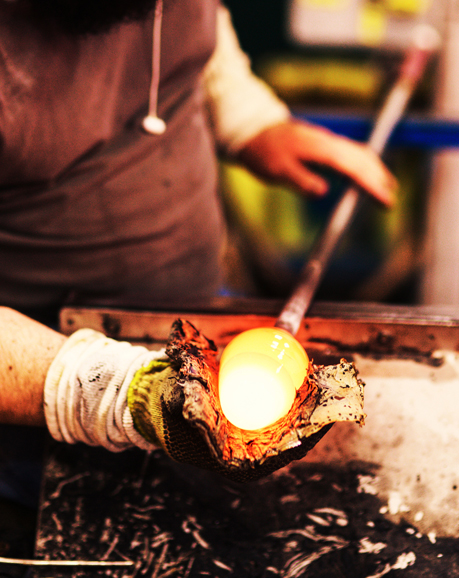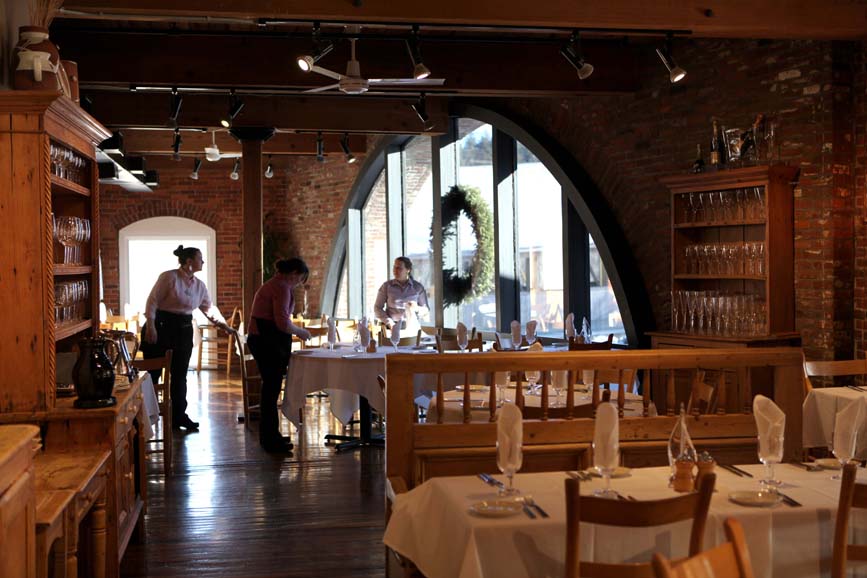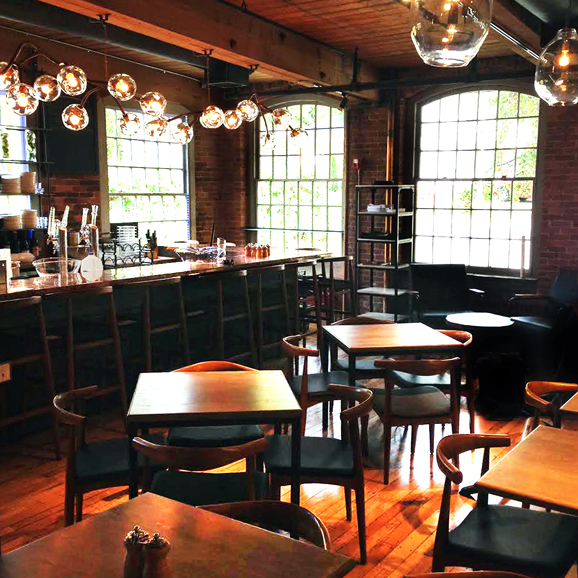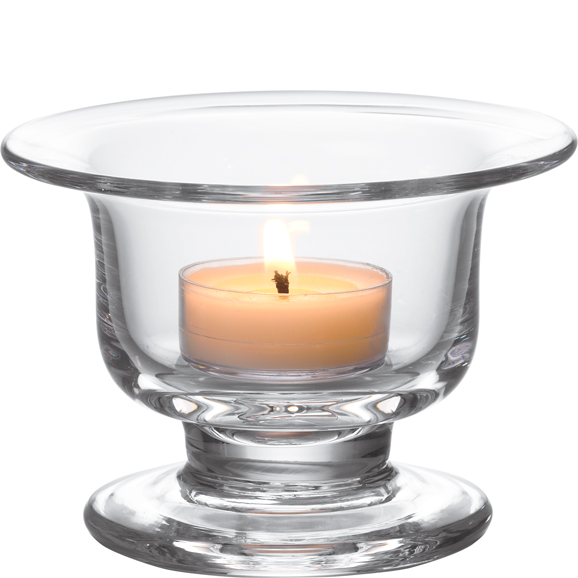Simon Pearce wished to preserve the craft of glassblowing.
And his business, with locations in Connecticut, has done so for more than 30 years.
Pearce’s eponymous company creates and sells handblown, lead-free, crystal glassware, with collections, including tabletop and décor items, as well as pottery and specialty lighting.
Founded in 1981, Simon Pearce relocated from Bennettsbridge, Ireland to Quechee, Vt., where the surroundings mirror the Emerald Isle’s grasslands. The Vermont headquarters is not only a manufacturing site, it’s also an experience. Attracting about 300,000 visitors annually, the location features glassblowing demonstrations, held daily from 9 a.m. to 10 p.m., in addition to The Mill at Simon Pearce, a farm-to-table restaurant where guests can enjoy a meal served on Simon Pearce glassware and pottery.
Modern glass may be created in factories using specialized equipment, but the art of handblowing glass is centuries old. In molding molten materials into glass products, Simon Pearce craftsmen continue the tradition.
It’s no easy task, but for Bill Browne, master glassblower, it’s all in a day’s work.
Browne is the process-improvement specialist for Simon Pearce, focusing on glass production, distribution and facilities. He’s been blowing glass for more than 20 years.
“It requires focus, trust and teamwork at all times, every day,” Browne says. “The 2,100-degree (Fahrenheit) molten glass is close to the body at all times, and how we transfer glass from one iron to another requires us to hold the molten material over a teammate’s head.”
As Browne explains, a glassblower gathers liquid glass onto a blowpipe and shapes the material using traditional tools, wooden blocks and paddles and wet newspaper.
The glassblower then gently breathes down the blowpipe, rotating the material while filling it with air. He shapes the air bubble into a design, using a form or doing it by hand. The material is then attached to an iron, removing it from the blowpipe, to be heated, softened and shaped into its final dimensions.
The last step requires the glass to cool and solidify.
“It can take anywhere from eight hours for a light piece under a pound to 70 hours or more for an item that is extremely heavy, 20 pounds or more,” Browne says.
He explains that Simon Pearce specifically uses a “pontil” iron — a fishing iron — during the crafting process, which distinguishes the glass from other glassware.
“The pontil is the mark of the marker and a functional transition to create hand-finished glass,” says Browne.
When the iron attaches to the material, it leaves a mark on the glass, which is often removed. Simon Pearce, however, leaves a cross-shaped mark on its glass. When the iron is removed, the cross takes on a clover effect, identifying that it’s exclusive to Simon Pearce.
Simon Pearce has locations at 170 Main St. in Westport and 125 E. Putnam Ave. in Greenwich. For more, visit simonpearce.com.

